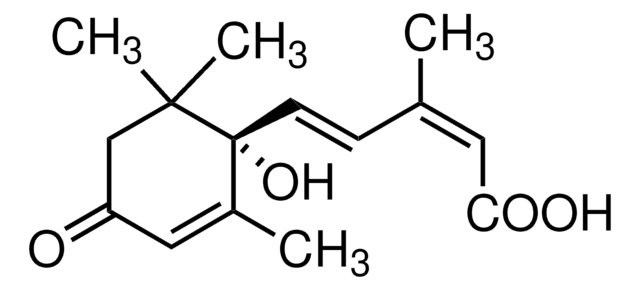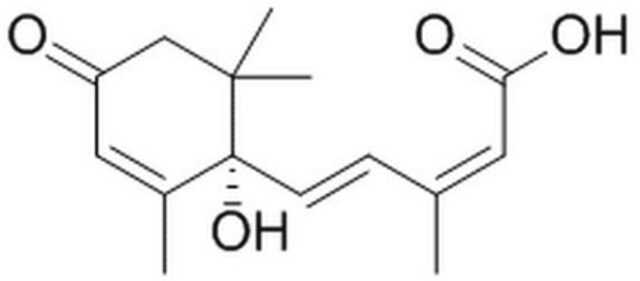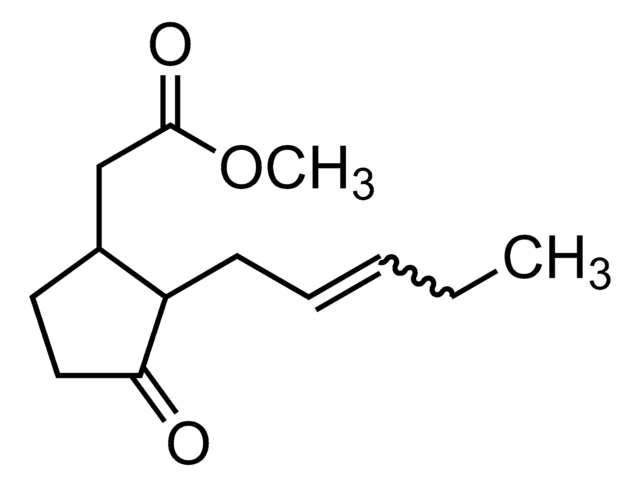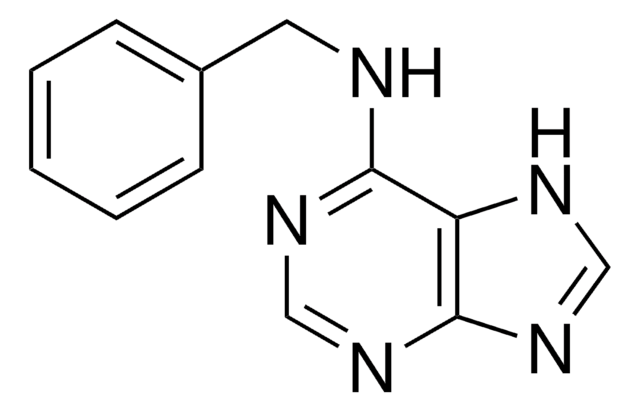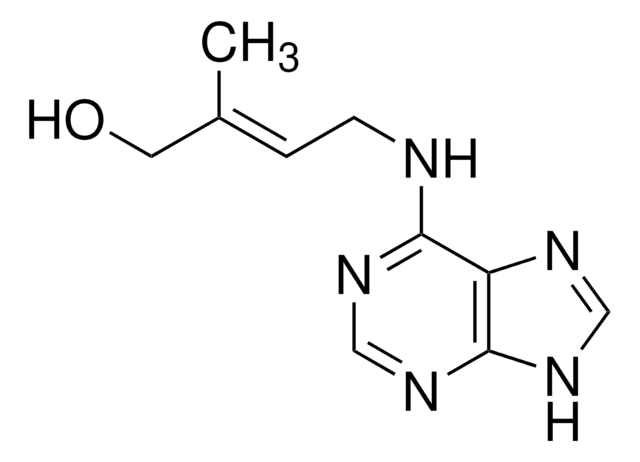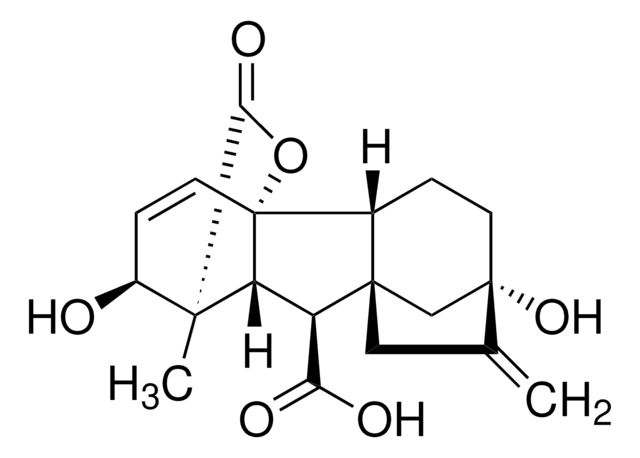862169
2-cis,4-trans-Abscisic acid
synthetic, 98%
Sinonimo/i:
(±)-Abscisic acid, (2Z,4E)-5-(1-Hydroxy-2,6,6-trimethyl-4-oxo-2-cyclohexen-1-yl)-3-methyl-2,4-pentadienoic acid, ABA, Dormin
About This Item
Prodotti consigliati
Livello qualitativo
Saggio
98%
Forma fisica
powder
Punto di fusione
186-188 °C (lit.)
Temperatura di conservazione
2-8°C
Stringa SMILE
CC(\C=C\C1(O)C(C)=CC(=O)CC1(C)C)=C\C(O)=O
InChI
1S/C15H20O4/c1-10(7-13(17)18)5-6-15(19)11(2)8-12(16)9-14(15,3)4/h5-8,19H,9H2,1-4H3,(H,17,18)/b6-5+,10-7-
JLIDBLDQVAYHNE-LXGGSRJLSA-N
Cerchi prodotti simili? Visita Guida al confronto tra prodotti
Descrizione generale
Applicazioni
- Chiral Separation of Abscisic Acid: Research demonstrated direct chiral separation of abscisic acid using high-performance liquid chromatography with a phenyl column and a gamma-cyclodextrin mobile phase, advancing the analytical methods essential for studying plant stress hormones (Terashima et al., 2023).
- Xanthine Oxidase Inhibitory Activity: A study including abscisic acid derivatives showed significant xanthine oxidase inhibitory activity, offering potential health benefits and therapeutic applications (Miyata et al., 2019).
- Anticancer Potential: Extracts containing abscisic acid from mangrove endophytic fungi exhibited cytotoxic properties and induced G(0)/G(1) cell cycle arrest and apoptosis in human cancer cells, highlighting their potential in cancer treatment strategies (Zhou et al., 2018).
- Antidiabetic Activity: Extracts involving abscisic acid from an endophytic fungus showed promising antidiabetic activity, potentially improving treatment options for diabetes through natural product research (Uzor et al., 2017).
- Glucose Tolerance and Insulinemia Reduction: A groundbreaking study found that microgram amounts of abscisic acid in fruit extracts significantly improve glucose tolerance and reduce insulin levels in rats and humans, suggesting its use as a dietary supplement for managing diabetes (Magnone et al., 2015).
Codice della classe di stoccaggio
11 - Combustible Solids
Classe di pericolosità dell'acqua (WGK)
WGK 3
Punto d’infiammabilità (°F)
Not applicable
Punto d’infiammabilità (°C)
Not applicable
Dispositivi di protezione individuale
Eyeshields, Gloves, type N95 (US)
Certificati d'analisi (COA)
Cerca il Certificati d'analisi (COA) digitando il numero di lotto/batch corrispondente. I numeri di lotto o di batch sono stampati sull'etichetta dei prodotti dopo la parola ‘Lotto’ o ‘Batch’.
Possiedi già questo prodotto?
I documenti relativi ai prodotti acquistati recentemente sono disponibili nell’Archivio dei documenti.
I clienti hanno visto anche
Il team dei nostri ricercatori vanta grande esperienza in tutte le aree della ricerca quali Life Science, scienza dei materiali, sintesi chimica, cromatografia, discipline analitiche, ecc..
Contatta l'Assistenza Tecnica.